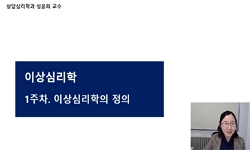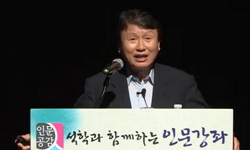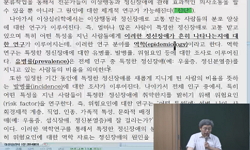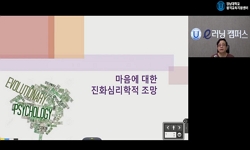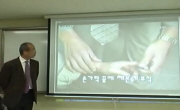이 연구는 1930년대 시에 나타난 거리를 살펴보고 그에 따른 화자와 대상의 모습을 고찰해 보았다. 그 결과를 요약하면 다음과 같다. 첫째, 비교적 가까운 거리인 관념형은 시에서 가장 많...
http://chineseinput.net/에서 pinyin(병음)방식으로 중국어를 변환할 수 있습니다.
변환된 중국어를 복사하여 사용하시면 됩니다.
- 中文 을 입력하시려면 zhongwen을 입력하시고 space를누르시면됩니다.
- 北京 을 입력하시려면 beijing을 입력하시고 space를 누르시면 됩니다.
거리에 따른 화자와 대상 연구 = (A) study on the speakers and the objects on the physical distances of the poems
한글로보기https://www.riss.kr/link?id=T7645316
- 저자
-
발행사항
제주 : 제주대학교 교육대학원, 1999
-
학위논문사항
학위논문(석사) -- 제주대학교 교육대학원 , 국어교육전공 , 2000. 2
-
발행연도
1999
-
작성언어
한국어
- 주제어
-
KDC
811.6 판사항(4)
-
발행국(도시)
제주특별자치도
-
형태사항
77p. : 삽도 ; 26cm .
- 소장기관
-
0
상세조회 -
0
다운로드
부가정보
국문 초록 (Abstract)
이 연구는 1930년대 시에 나타난 거리를 살펴보고 그에 따른 화자와 대상의 모습을 고찰해 보았다. 그 결과를 요약하면 다음과 같다.
첫째, 비교적 가까운 거리인 관념형은 시에서 가장 많이 드러나는 유형으로 화자는 자신의 정서와 관념을 전달하려는 태도를 지닌 감성적 화자가 나타나고 있으며 대상은 화자의 정서와 관념을 전달하기 용이하도록 조직함으로서 관념화되고 있다.
둘째, 비교적 먼 거리인 즉물형은 화자가 청자에게 자신의 정서를 전달하려는 태도가 아니라 객관적 대상의 물질적 속성이나 외관을 전달하려는 태도로 화자의 정서나 관념이 억제되며 작품은 <화자↔대상↔청자>의 관계로 나타나고 있다.
지용의 즉물형에서는 대상을 객관적으로 드러내는 매우 이성적인 화자가 나타나고 있다. 대상은 물질적 속성이나 외관을 강화시켜 인간의 주관적 세계를 나타내는 대상이 아닌 객관적 절대 세계를 나타내는 대상으로 창조하고 있다. 이는 지용에 의해 30년대 개척된 것으로 김춘수의 후기 시로 계승되고 있음을 볼 수 있다.
셋째, 지나치게 가까운 거리인 무의식형은 화자가 청자에게 무의식의 내용을 전달하려는 태도를 지닌 것으로 작품은 <강한 무의식 화자↔화제↔청자>의 관계로 나타난다. 이는 30년대 이전의 우리 나라 전통적인 작품에서는 보이지 않던 태도로 이상의 시에서 새롭게 드러난 거리라 할 수 있으며 부분적으로 많은 작가의 작품에서 그 영향을 짐작할 수 있다.
무의식형에 드러나는 화자는 강한 무의식과 약한 의식의 정신 세계를 갖고 있는 화자다. 강한 무의식은 화제의 대상에 대한 강렬한 욕망을 갖고 있어 반복과 집착이 드러난다. 약한 의식은 진술의 일관성을 상실하고 있음을 볼 수 있다.
무의식형에서 드러나는 대상은 성과 관련된 내용으로 남성과 여성 그리고 성행위를 나타내고 있으며 대상들은 변용 되어 나타나고 있다. 변용의 형태는 형태적 유사성에 근거해서 남성은 1형태, 여성은 0형태 그리고 성행위는 동일어구의 반복이나 합침의 형태로 나타나고 있다. 또하나 확인할 수 있는 변용은 대상물의 형태적 유사성만이 아니라 음성이 유사성을 토대로 하는 변용도 보인다.
넷째, 지나치게 먼 거리인 기호적 상징형은 이상의 시에서 나타난다. 이상의 시에 드러나는 기호적 상징형은 화자가 화제를 기호적 상징으로 드러내려는 태도를 지니는 것으로 작품은 <화자↔기호적 상징↔청자>의 관계로 나타난다. 이는 전통적인 <화자↔언어↔청자>의 관계를 해체하는 특징을 지니고 있으며 이상에 의해 새롭게 개척된 거리이나 이후의 작품에서는 발견되지 않고 있다.
기호적 상징형에서 드러나는 화자는 화제를 전달할 수 없는 심리적 상황에 처해 있는 화자로 화자와 화제의 통합적인 관계가 깨어져 있는 해체 화자다. 이 기호적 상징형에서 드러나는 화자는 지적이고 비교적 이성적인 모습을 보이나 화제는 성에 관한 노골적인 내용이어서 화자가 직설적으로 표현하기가 힘든 내용으로 화자와 화제의 관계가 해체되어 있다.
이러한 기호상징의 체계는 언어체계인 열쇠(key word)를 통해 의미가 드러나고 있으며 이 언어체계인 열쇠(key word)를 통해서만 그 체계는 온전히 드러난다.
이상의 기호적 상징형에서 드러나는 숫자는 기본적으로 인간을 지칭하는 것이며 특히 여성은 '0'이나 '3'으로 기호화되고 남성은 '1'로 기호화되었으며 점(·)들은 아이나 정자를 기호적 상징화한 것이다. '+'는 성적 결합을 기호적 상징으로 나타낸 것이라 할 수 있다. 기호적 상지형에서 드러나는 화자는 의식적인 화자가 무의식화 되는 양상을 보여준다.
다국어 초록 (Multilingual Abstract)
This study is aimed to consider the physical distances of the poems in the 1930s and their speakers and objects in the poems. The results from the study are as follows; Firstly, the comparatively close ideology is one of the most familiar types in ...
This study is aimed to consider the physical distances of the poems in the 1930s and their speakers and objects in the poems. The results from the study are as follows;
Firstly, the comparatively close ideology is one of the most familiar types in poems, in which is most reflected the emotion of the speaker who wants to express his own emotion and ideology. And their objects are ideologized so that the speakers' emotions can be well expressed.
Secondly, the comparative distant ideology is not the attitude to express the speaker's own emotion but the attitude to express the objective nature and appearance of the materials, in which speaker's emotion and feelings are restricted with the relations of [speakers,⇔ objectives⇔ listeners ]in the poems.
In Ji-yong' s comparative distant ideology appears a rational speaker who is trying to express the objects objectively. The object is created as the absolutely objective world by strengthening material nature and appearance, not as the subjective world. This is regarded as Ji-yong's succession of Kim Chun-su's poems developed in the 1930s.
Thirdly, the extremely close ideology, the unconsciousness, has the attitude to express speakers' unconsciousness to listeners with the relations of unconscious [speakers ⇔ speakers⇔ listeners]. This attitude had not existed in the Korean traditional work before the 1930s. Therefore this attitude seems to have appeared in Yi Sang's poem for the first time. And we have found that its tendency has been reflected in many poems so far.
The speakers in the unconsciousness have both complete unconsciousness and a little consciousness. The complete unconsciousness has so much eagerness with speakers' objects that we can find repetition and persistence. On the other hand, we can find that a little consciousness has lost the consistent statement.
The speakers in the unconsciousness have something to do with sex, which deals with male, female and sexual acts. And its objects have been transformed. As to the transformations, males are the type 1, females, 0, and the sexual acts are symbolized as the repetitions of words or compounds. Another transformation is phonetically similar symbols as well as the types of objects.
Fourthly, the extremely distant symbolic figures show up in Yi Sang's poems, in which the poet has the attitude to express his objects by the use of symbolic figures with the relations of [speakers ⇔symbolic figures⇔listeners]. This attitude tries to abolish the traditional relations of [speakers ⇔words⇔listeners].
We have not found this attitude since Yi Sang's poem and streets.
The speakers in the symbolic figures are not in the psychological position to express the topics. They are intelligent and comparatively rational. However, their topics are mainly about sexual acts, so they can not talk about the sexual acts directly. Therefore, the speakers appear to have nothing to do with the topics.
These symbolic figures can be interpreted through the key words and only the key words can reveal the systems.
The numerical symbols are basically the symbols of man"0 or 3" stand for females, "1" stands for males and dots stand for children or spermatozoons. The figure"+"stands for sexual acts. The conscious speakers in the symbolic figures have been changing into the unconscious speakers.
목차 (Table of Contents)
- 국문 초록
- Ⅰ. 서론 = 1
- Ⅱ. 1930년대의 거리 유형 = 4
- 1. 비교적 가까운 거리 = 5
- 2. 비교적 먼 거리 = 8
- 국문 초록
- Ⅰ. 서론 = 1
- Ⅱ. 1930년대의 거리 유형 = 4
- 1. 비교적 가까운 거리 = 5
- 2. 비교적 먼 거리 = 8
- 3. 지나치게 가까운 거리 = 11
- 4. 지나치게 먼 거리 = 13
- Ⅲ. 거리에 따른 화자의 특질 = 16
- 1. 감성 화자 = 16
- 2. 이성 화자 = 20
- 3. 무의식 화자 = 27
- 4. 해체 화자 = 32
- Ⅳ. 거리에 따른 대상의 특질 = 38
- 1. 대상의 관념화 = 38
- 2. 대상의 강화 = 43
- 3. 대상의 변용 = 49
- 4. 대상의 감춤 = 56
- Ⅴ. 지용과 이상의 시적 특질과 문학사적 위치 = 63
- 1. 시적 특질 = 63
- 2. 시사적 의의 = 66
- Ⅵ. 결론 = 69
- 참고 문헌 = 72
- 영문 초록





